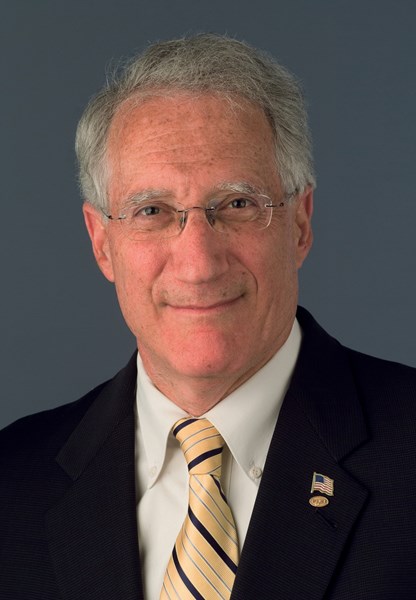NEW YORK, Feb. 14, 2013 (GLOBE NEWSWIRE) -- America's nuclear energy facilities, incorporating significant post-Fukushima safety enhancements, operated safely and reliably in 2012 and continue to bring tremendous value to the nation's electric sector, an industry leader told Wall Street financial analysts today.
In a briefing sponsored by the Nuclear Energy Institute, NEI President and Chief Executive Officer Marvin Fertel told analysts, "The value proposition for nuclear energy is strong and will reassert itself as we move beyond the near term."
While historically low natural gas prices and sluggish electricity demand caused by the recession pose short-term financial challenges for some energy companies, "the long-term fundamentals continue to support this technology," Fertel said. Beyond the massive amounts of electricity generated, he cited clean-air compliance value, voltage support for electric grid stability, forward electricity price stability, and fuel and technology diversity as key attributes that consumers receive from 100-plus reactors that "create hundreds of millions of dollars in direct and indirect revenue for state and local economies."
Preliminary data for 2012 shows that nuclear energy facilities achieved an average capacity factor of 86.4 percent. The industry average includes four reactors—Crystal River in Florida, Fort Calhoun in Nebraska, and San Onofre 2 and 3 in California—that did not operate either the entire year or virtually all of it.
"If we exclude those sites, we get an average capacity factor of 89.2 percent," Fertel said. The industry's average capacity factor, a measure of efficiency, has been at or within a few percentage points of 90 percent every year for the past decade, even though every reactor is idled for at least 20 days for refueling every 18-24 months. The three sites he mentioned have been off-line due to, respectively, issues related to containment structure maintenance, historic Midwest flooding and other safety issues, and steam generator replacements.
"It is imperative that we continue to operate at exemplary levels of safety to maintain the far-reaching benefits of nuclear energy," Fertel said. "Nuclear power plants produce nearly two-thirds of America's carbon-free electricity."
The U.S. nuclear energy industry and its regulator, the Nuclear Regulatory Commission, are in broad agreement with respect to implementing lessons learned from the accident in Japan, and modifying America's already-safe nuclear energy facilities with added layers of protection, Fertel said.
In 2012, companies that operate nuclear plants procured portable back-up safety equipment as part of industry's FLEX approach. The FLEX strategy is based on having multiple sets of portable equipment in diverse locations at each nuclear energy facility and additional equipment and supplies at offsite centers that would supplement the on-site equipment, if needed. As part of the FLEX strategy, industry is developing regional response centers in Memphis and Phoenix that will dispatch additional equipment and resources, if needed.
Construction of five reactors in Georgia, South Carolina and Tennessee is progressing apace, Fertel said, with nearly 70 additional reactors under construction worldwide. All five reactors in the Southeast are expected to be generating electricity well before the decade ends. The industry is also developing small reactor technology—under 300 megawatts capacity—to complement the conventional product line of larger reactors.
Internationally, support for nuclear power grows along with the global market for its development. The U.S. Department of Commerce last year estimated that the global market for nuclear components and services will approach $750 billion over the next 10 years. American companies today need the federal government to streamline review of agreements for cooperation and export regulations for U.S. firms to compete in this market, Fertel said.
"Our companies compete against state-owned enterprises, and we need to capture a greater share of the global market," Fertel said. "Existing regulations placed upon our companies are unnecessarily complex and cumbersome. Approvals that take a few weeks or months in other countries take a year or longer in the United States."
Every $1 billion of exports represents 5,000 to 10,000 American jobs, according to the Commerce Department, but U.S. manufacturers are disadvantaged under existing export control rules.
On industry policy, Fertel said Congress has signaled interest in revamping the federal government's long-delayed nuclear waste management program. Lawmakers on both sides of the aisle have expressed support for legislation implementing the recommendations from the Blue Ribbon Commission on America's Nuclear Future, he said. Consensus appears to be forming around a four-pronged approach: development of a consolidated interim storage site in a volunteer community; formation of a new management organization to oversee the used fuel program; access by the organization to the federal Nuclear Waste Fund; and development of a geologic repository.
The Nuclear Energy Institute is the nuclear energy industry's policy organization. This news release and additional information about nuclear energy are available at www.nei.org.
The Nuclear Energy Institute logo is available at http://www.globenewswire.com/newsroom/prs/?pkgid=16543
A photo accompanying this release is available at: http://www.globenewswire.com/newsroom/prs/?pkgid=17168
